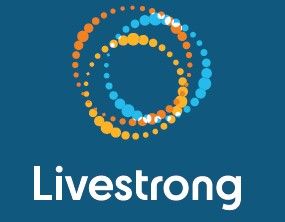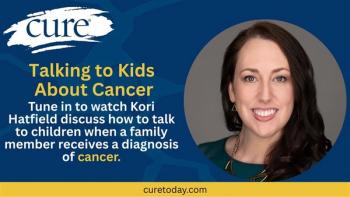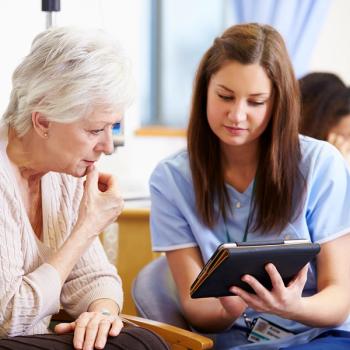
Developing Second Cancers And How To Manage Them

One to three percent of survivors develop a second cancer different from the originally treated cancer. The level of risk is small, and greater numbers of survivors are living longer due to improvements in treatment. However, even thinking about the possibility of having a second cancer can be stressful.
Current research shows that cancer survivors in general have an increased chance of developing cancer compared to people of the same age and gender who have not had cancer. This means that it is even more important for cancer survivors to be aware of the risk factors for second cancers and maintain good follow-up health care.
Risk Factors for Second Cancers
Whether or not you will have a second cancer depends on many different things. This may include your age when treated, the treatment you received and your genetic make-up and family history. Even if you find you are at a higher risk, it does not mean that you will develop cancer again. Keep in mind that, although the risk is higher, the actual number of people who will get a second cancer is relatively small. Each cancer survivor’s experience is unique. This overview describes some of the risks for developing second cancers:
Type of cancer
The type of original cancer you had may affect your risk for a second cancer because some cancers require treatment with radiation or high doses of certain types of chemotherapy. It is not yet clear to researchers if the second cancer is caused by the treatment or by the original cancer, or by a combination of the two. Another possibility is that both the original cancer and a second cancer share certain risk factors such as an underlying cause, environmental exposure or genetic predisposition.
Age at time of treatment
Children and young adults have a higher risk of second cancers related to treatment with radiation or chemotherapy than older adults have. Younger survivors have more at-risk years for second cancers. Generally, you should always be alert for symptoms of a second cancer.
With age, the risk of cancer increases even among those who have never had cancer. Researchers continue to study second cancers in survivors. They hope to develop treatment methods that reduce the risk of developing cancer again. A healthy lifestyle may help minimize this risk.
Type of chemotherapy
High doses of chemotherapy medicines are associated with a small number of second cancers in some survivors. Types of chemotherapy that may make you more likely to have a second cancer include:
- Procarbazine.
- Mechlorethamine.
- Chlorambucil.
- BCNU (bischloroethylnitrosourea).
- Nitrogen mustard.
- Cyclophosphamide.
- Ifosfamide.
- Epipodophyllotoxins.
- Anthracyclines.
Type of radiation
The higher the dose of radiation received, the more risk for developing a second cancer. In general, the risk of having a second cancer from radiation is very low, and much depends on the amount of radiation given during treatment. For survivors of childhood cancer, radiation therapy is the most important risk factor for second cancers.
Bone marrow transplant
With longer follow-up of increasing numbers of survivors after hematopoietic stem cell transplant (SCT), there may be an increased risk of second cancer. This may be related chemotherapy and radiation treatments, effects on the immune system and genetic predisposition.
Family history
When cancer "runs in the family," survivors have a higher chance of developing second cancers than those who do not have a family history of cancer. Survivors from families who have "predisposing conditions" that increase the possibility of cancer should know their family history. They should also participate in specialized follow-up care that can help with early detection.
Lifestyle
Smoking, excessive alcohol use, lack of exercise and poor diet are some of the unhealthy behaviors that might be risk factors for second cancers. These are the only known risk factors for a second cancer that you can personally avoid by choosing to change some of the habits that put you at risk.
Sometimes second cancers happen in survivors who were not affected by any of the risk factors mentioned above. Ask your health care provider to discuss your risk factors for a second cancer based on your cancer type, treatment received and your general medical history.
Symptoms of Second Cancers
Knowing the general symptoms of cancer is a great way to help you detect a second cancer early. The earlier a second cancer is diagnosed, the more likely it can be successfully treated. In some cases, second cancers cannot be prevented.
Some types of cancer may not present any symptoms. Health care including regular check-ups and screenings can help detect problems early. Screening may include blood tests and imaging such as X-rays, CT scans and PET scans.
Symptoms include:
- Changes in bowel or bladder habits.
- A sore that does not heal.
- Unusual bleeding or discharge.
- Thickening or lump in the breast or other parts of your body.
- Indigestion or difficulty swallowing.
- Noticeable change in a wart or mole.
- Nagging cough or hoarseness.
- Fatigue.
- Bone pain.
- Changes in vision.
- Constant or severe headaches.
Having some of these symptoms doesn't mean you have cancer. However, it's best to talk with your health care provider if you notice these or other symptoms. Open communication with your health care team may help them recognize signs or symptoms that are not always easy to see on your own. Also, talking with your doctor about concerns you have about second cancers may help relieve some of the anxiety that you might have.
Does Cancer Treatment Cause Second Cancers?
No one knows exactly why survivors who have been treated for cancer develop a second cancer. Yet, there are some theories about why cancer and its treatment sometimes cause second cancers including:
- Some research suggests that chemotherapy and radiation may weaken the immune system making it easier for second cancers to develop.
- Sometimes chemotherapy that is used to treat the original cancer may cause the bone marrow to make abnormal cells. This might lead to second cancers in some survivors.
- Radiation destroys cancer cells and may cause damage to healthy cells. This damage may contribute to second cancers.
Your health care team has a primary goal of treating the cancer the best way they can. Research is ongoing to create treatment options for survivors that decrease the risk of long-term effects and improve the quality of life for survivors.
In the past, some second cancers were caused by treatments that are no longer given today. Newer treatments for cancer generally use less toxic medicine than was used years ago. Research may show that this will ultimately result in a decrease in the number of second cancers that develop in survivors.
When Do Second Cancers Occur?
A second cancer can appear at any time during survivorship. Some studies show that a common time for cancers to develop is from five to nine years after completion of treatment.
For childhood cancer survivors, secondary leukemia is most likely to occur less than ten years after treatment of the original cancer. Solid tumors related to radiation may occur more than ten years afterward. However, because the exact causes of second cancers are not yet known, it is difficult to predict when they might appear. Lifetime monitoring by health care providers who are knowledgeable about survivorship care is recommended—even years after completing treatment for the original cancer.
Minimize the Risk of Second Cancers
One of the most important things you can do is to follow-up with a health care team that is well-informed about survivorship care. Good medical care and screening can help detect second cancers early.
Also:
- Try to find balance with a healthy lifestyle.
- Know if your family has a history of cancer.
- Use a health journal to prepare for your next visit with a member of your health care team.
Fear of Cancer Recurrence
Fear of recurrence, the concern that cancer will come back after treatment, is common among survivors. Although having some concerns about recurrence is natural, too much worrying can affect your quality of life. Understanding how to manage fear of recurrence can help you feel more confident and secure about survivorship. If you experience this type of fear:
- Talk with your friends and loved ones about your concerns. You might find that beginning a conversation about your fears can be helpful for loved ones and friends. Some may be afraid to bring up their worries because they don't want to upset you. However, talking with them may help them, and you are likely to feel less alone. Together, you may be able to come up with a plan to face these fears.
- Find a cancer support group. Support groups can provide a safe environment to share experiences with other survivors. You can also learn new ways to handle difficult situations and have a chance to talk about emotional issues that only survivors may understand. These groups can offer an opportunity to learn different styles of coping with fear and ways of adjusting to life as a cancer survivor. If you are not comfortable talking about certain subjects with your family or friends, a support group will offer a place to talk freely about what is important to you. Each support group is unique so you may want to try more than one to find the best one for you.
- Talk with a professional therapist. If family and friends are not able to help you with concerns, your health care team or a licensed counselor may be an important source of support. Ask for a referral to a therapist who works with other cancer survivors. Most cancer centers employ oncology social workers who are specially trained to work with cancer survivors and their families. Even if you are not a patient at a cancer center, the oncology social worker may meet with you or refer you to someone else in the community.
No matter how long it has been since you finished treatment, there may be certain occasions when the fear of cancer recurrence affects you. With time, you are likely to find that your concerns and the level of fear may lessen.





